Five Important Considerations Before Going For Stem Cell Therapy
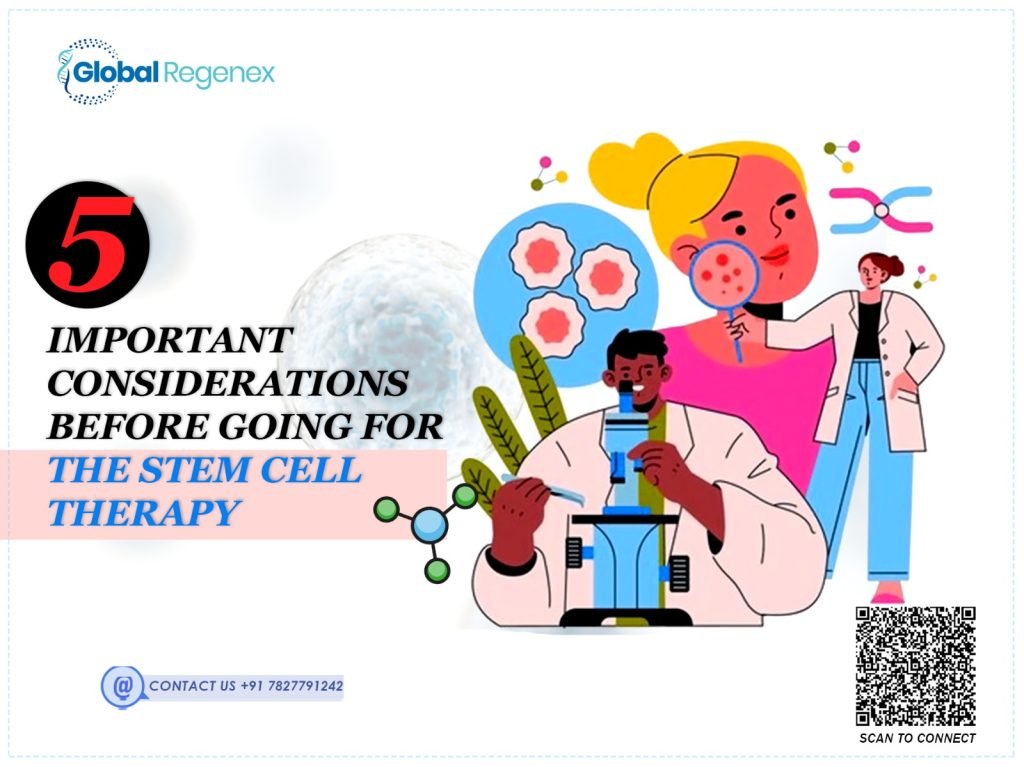
Are you considering stem cell therapy as a treatment for your medical condition? You are not the only one. Seeing the increasing success stories and promising clinical results, many people are exploring stem cell therapy as an alternative treatment for their chronic conditions. However, before you decide to book a session for yourself, it is important to fully understand the aspects of stem cell therapy. Being informed can help you make the right decisions, which leads to a healthy life. What is Stem Cell Therapy? Stem cell therapy utilizes stem cells. One of the most recognized things about stem cells is that they can differentiate into various kinds of cells within the body. They are an amazing option for the treatment of most infections since they heal by replacing and restoring the body’s damaged cells with new ones. It reduces inflammation in an injury site by restoring the damaged tissue. Benefits of Stem Cell Therapy Below are some benefits of stem cell transplant mentioned: Secure Treatment: Stem cells have significant capability to effectively promote healing in the body, especially for orthopedic trauma to ligaments, ruptures of the tendons, and cartilage injury. Less Pain and Inflammation: With immune system modulatory capability, stem cell treatment decreases chronic swelling and pain and heals conditions such as arthritis and autoimmune diseases. Less Invasive: Most stem cell treatments are non-surgical or minimally surgical, producing shorter recovery periods and less risk. Supports Natural Healing: Stem cell therapy does better than conventional treatment in activating the body towards the natural restoration of damaged tissue. Reduced Medication Use: Stem cell therapy reduces dependency on medication for pain and long-term pain relief. What You Must Know Before Starting Stem Cell Therapy? Know About the Therapy This therapy uses stem cells, which have the ability to develop into many different cell types. Stem cell therapy uses these cells to repair and regenerate damaged tissues. It is important to know the science behind the treatment so you can have realistic expectations about the results and recovery. Evaluate the Condition Being Treated Stem cell treatment is not effective for every condition. Whether the therapy works depends mostly on what condition you’re being treated for—a neurological disorder, an orthopedic issue, or an autoimmune disease. Study how your particular condition responds to stem cell therapy, and make sure to discuss all potential outcomes with your physician. Choose a Certified Clinic or Hospital Stem Cell Therapy in Delhi is picking up speed, and with that many clinics have cropped up, but all clinics do not have the same medical standards. You need to choose an experienced government-approved clinic that utilizes top-quality stem cells of ethical source and trained doctors on the job. Always make sure to look out for certifications and patient reviews. Know the Cost and Number of Sessions Involved Stem cell therapy can be costly and may require more than one sitting to be effective. It is advisable to go for an appropriate consultation before this to know the overall cost breakdown, number of sittings, and follow-up required. This will enable you to budget and prevent unexpected bills. Be Aware of Legal and Ethical Guidelines India does have regulatory agencies that oversee ethical stem cell use. Make sure your treatment adheres to the protocols of the Indian Council of Medical Research (ICMR) and other health groups. Stay away from clinics that promise too much or guarantee rapid results since these usually have red flags. For Expert Advice If you are inquiring about receiving stem cell treatment but would prefer to pose questions regarding the process, possible gains, or qualifying for treatment, seeing a specialist would be a wonderful idea. You can find out more about the best health and medical issues for your specific situation by speaking with Global Regenex experts. To ensure you receive the best assistance available, you can be walked through this process by experienced professionals in their field. As Conclusion Before opting for stem cell treatment, give yourself time to investigate, seek answers to your questions, and take advice. Opting for the right clinic, knowing what is wrong, and being prepared for what lies ahead will serve to make educated decisions. Performed responsibly, stem cell treatment in India has the potential to bring encouraging results and greatly enhance the quality of life.
How Expensive Is Stem Cell Therapy?
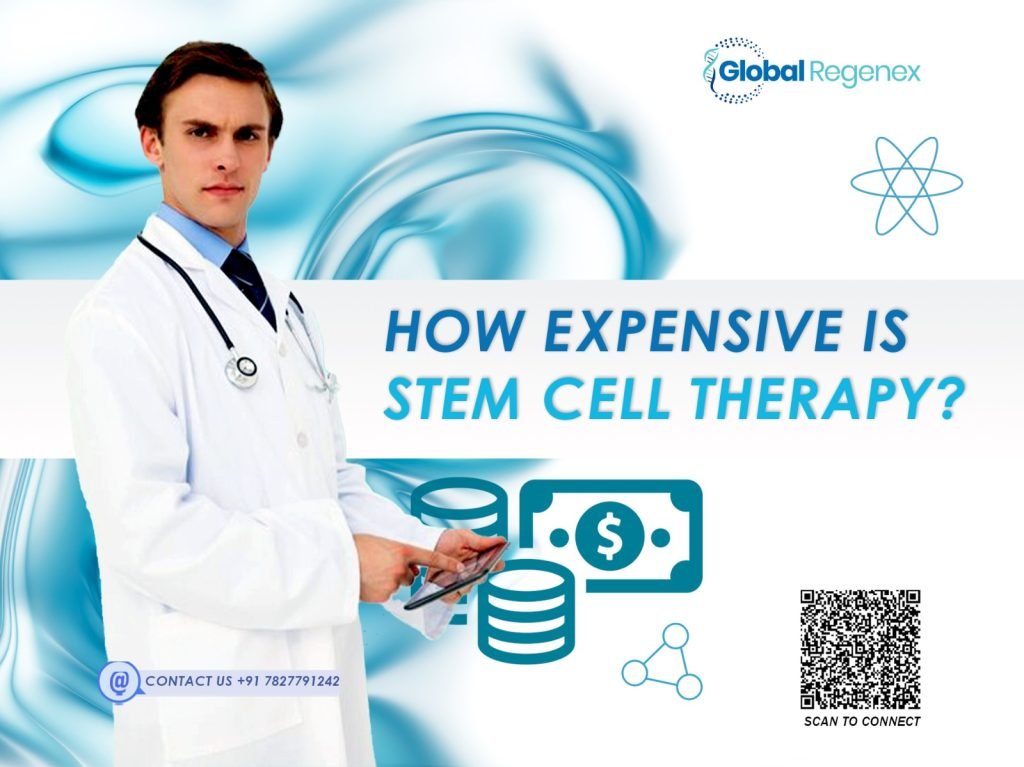
Stem cell therapy has evolved as a possible solution for multiple medical issues from orthopedic to neurological, among others, in the past few years. As its popularity grew, people across the globe began viewing it as a ray of hope and a chance for recovery, but the question that was often asked was, “How much is a stem cell therapy?” So let me provide you with a brief and straightforward answer. The price of stem cell therapy may differ depending on several factors, such as the nature of the diseases being treated, the country in which the treatment is conducted, the physicians, and once more, the source of the stem cells. So now, moving on to what are the key factors which determine the price of new medical technology. Stem Cell Therapy: An Innovative Medical Approach Stem cell therapy utilizes the capabilities of bone marrow- or fat-based stem cells that are delivered to the injured area. Stem cells have regenerative properties that enable them to differentiate into specialized repair cells, aid the inhibition of inflammation, and stimulate the body’s own healing capacity. Studying is being done to treat neurological disorders, immunological disorders, orthopedic injuries, and so on, which are turning out to be effective, and therefore, it can be a viable alternative and non-surgical option. Benefits of Stem Cell Therapy in India India has become a popular destination for stem cell therapy, where facilities on par with the world can be availed at a highly reasonable cost compared to many Western nations. As more and more hospitals and clinics acquire international certification, the patients are assured of superior quality treatment by employing the finest available medical technology. Cost-effective: Quality treatment without breaking the bank. Improved infrastructure: The most modern equipment and facilities. High Number of Treatments: Highly effective for orthopedic, neurological, and autoimmune disorders. Expert Physicians: Well-trained professionals who have studied in leading international institutions. Minimally invasive: Less time lost and faster recovery. Safety and Standards: International protocols are used by most clinics. All these benefits make India a favorite among patients from all over the globe looking for quality and effective stem cell therapy. With research still going on and friendly medical tourism policies, India remains at the forefront of this new-age science. Some Factors that Influence the Cost of Stem Cell Therapy The cost of stem cell therapy can vary on different factors that have been listed below: Condition & Type of Treatment The first and important factor is the condition the patient is being treated for. Different conditions require different procedures and approaches. For instance, if the orthopedic condition, it would be less costly than for neurological condition or spinal cord damage. The more experimental and complex the treatment, the more the chances of cost going up increases. Type of Stem Cells Used There are two ways to derive stem cells: autologous (from the patient’s own body) and allogeneic (donor). If the patient is treated through donor stem cells, it is more likely to involve higher regulatory and laboratory costs, which can impact your budget. Hospital & Private Clinic Treatment from private clinics or hospitals can charge you with different figures due to overhead and access to state-of-the-art research. Some private clinics can also be less expensive but might lack advanced infrastructure or regulatory controls. Pre & Post-Treatment Care The total cost for a patient undergoing stem cell therapy can include diagnostic tests, imaging, hospitalization, and follow-up visits. If the patient requires other treatment like physiotherapy, rehabilitation, or dietary regimens, these can also contribute to the total cost. Global Regenex: Your Perfect Partner for Stem Cell Therapy Consulting with an expert would be a great option if you are considering getting treated with stem cell therapy but want to inquire about the procedures, potential benefits, or qualifying for treatment. Seeking the opinion of Global Regenex specialists can enlighten you further regarding the best health and medical care for your individual case. These professionals with years of experience in their line of work can assist you through this process and have contacts with prestigious hospitals to help you get the best support you can possibly have. The Concluding Thoughts Stem cell therapy has a tremendous potential for replacing and regenerating damaged cells, but it is costly and bears a price that varies vastly based on location, ailment, and treatment details. Whether expensive or not, stem cell therapy in India may offer cheaper yet as effective alternatives. When considering stem cell therapy, it’s best to do your research, get a few different providers, and consult with Global Regenex to get the full price, including all those associated services, so you can make an informed decision.
How To Choose A Stem Cell Treatment Provider?
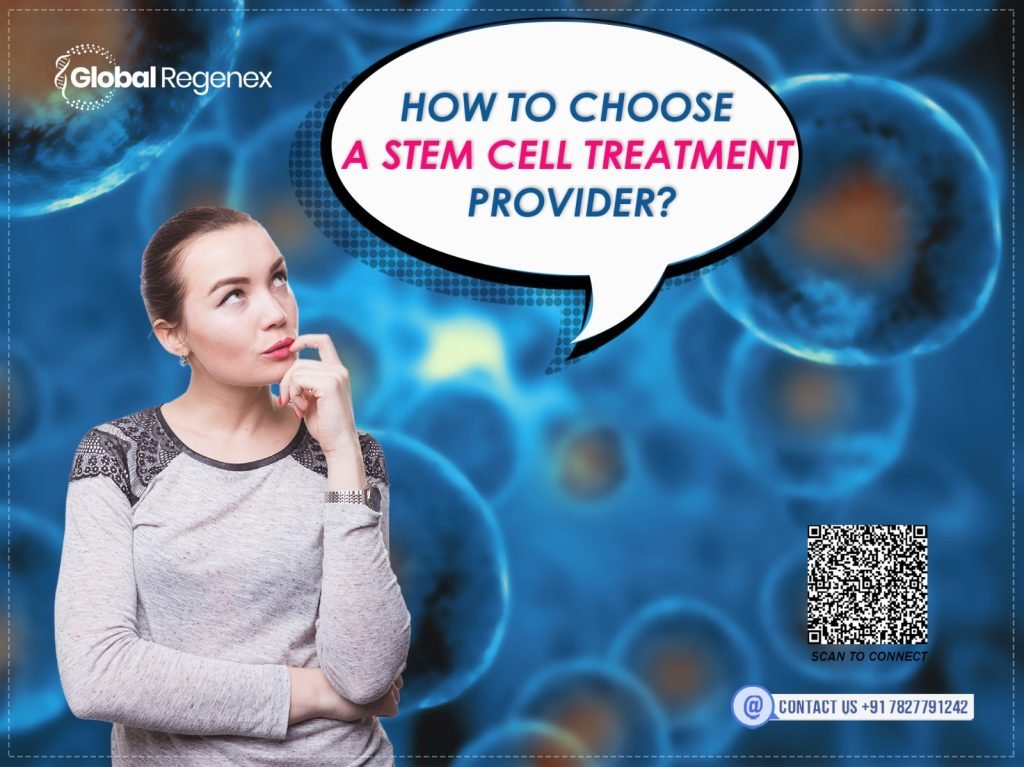
As you are aware of the power of stem cells as a potential treatment for many types of diseases, which can be treated through stem cell therapy to address a health condition or injury. However, with having so many options out there, providing stem cells, how should you choose the right provider? Whether you are looking for stem cell therapy in India, this blog is for you, guiding you to make an informed decision. Additionally, if you are interested in undergoing stem cell treatment, consulting with regenerative medicine experts at Global Regenex to find whether you are a good fit or not? Why Stem Cell Therapy? Stem cells are part of the body’s own self-repair mechanism. Stem cells are characterized by their own ability to differentiate into other forms of cells. They can cure anything ranging from joint and arthritis pain to neurological illness and can even be applied to cosmetic rejuvenation. But again, not all stem cell therapies are equal. The success of your therapy largely depends on the provider you choose. Key Factors to Consider When Choosing a Stem Cell Treatment Provider Expertise and Experience The most developed stem cell therapy needs a provider with an experience in the field of regenerative medicine. Clinics with doctors of high experience in regenerative medicine should be the ones to seek. For example, when searching for therapies with stem cells in India, make sure the providers are highly renowned for their expertise. Quality of Stem Cells Stem cells are certainly not equal. Depending on where they come from, how well they are made, and how they are prepared, the effectiveness of the treatment is sure to be impacted. Thus, inquire about where the providers are obtaining the stem cells and how they guarantee their quality and viability. Technology and Facilities For an effective stem cell treatment, sophisticated technology and world-class equipment are of significant importance. Preferred clinics would be those which possess the latest instrumentations and use best rigorous safe practices. The clinics would provide that in the event of lack of knowledge in the sector, a rigorous exploration hospitals would be done to seek such features, for example, facilities with contemporary laboratories and global-acceptable standards. Transparency and Communication An excellent provider will be extremely forthcoming about some parts of the procedure, expected outcomes, and potential risks involved. They ought to make some attempt to clarify all in great detail, respond to questions, and present a definitive treatment plan. Vagueness or loopholes provided by a clinic is a warning sign. Patient Reviews and Testimonials What do others say? Have some respect for reviews and testimonials, which are an indicator of the reputation of the provider in question. Young patients usually send good feedback messages following stem cell therapy in India; see it that this review assures you that you have chosen someone worth it. Customized Treatment Plants No two people are identical and hence their treatments. The approved practitioners need to try and probe your condition sufficiently in order to create a personal modification for you and yield optimum outcomes. Post-Treatment Care Healing and follow-up care is just as essential as the treatment procedure. Opt for a practitioner who provides complete after-treatment support, including scheduled follow-ups and aftercare guidance. Expert Advice? If you feel saturated by the options, you can reach out to Global Regenex for stem cell treatment or consulting. They have experience in providing patients with stem cell therapy as treatment across the globe, with having connections with many reputed hospitals. They can walk you through the process, provide you with answers, and plan a suitable treatment plan for your requirements. To Wrap Up Selecting the correct stem cell treatment center is extremely important in your quest for improved health. With expertise, technology, openness, and patient reviews on your mind, you are able to make an informed decision. Whether it is stem cell treatment in Delhi, rest assured that the better treatment center will always prove to be worth it. Are you ready to take the first step? Call Global Regenex today to set up a consultation and start their path to healing and recovery. Your health is worth it!
How Stem Cell Transplants Work Against Cancer?
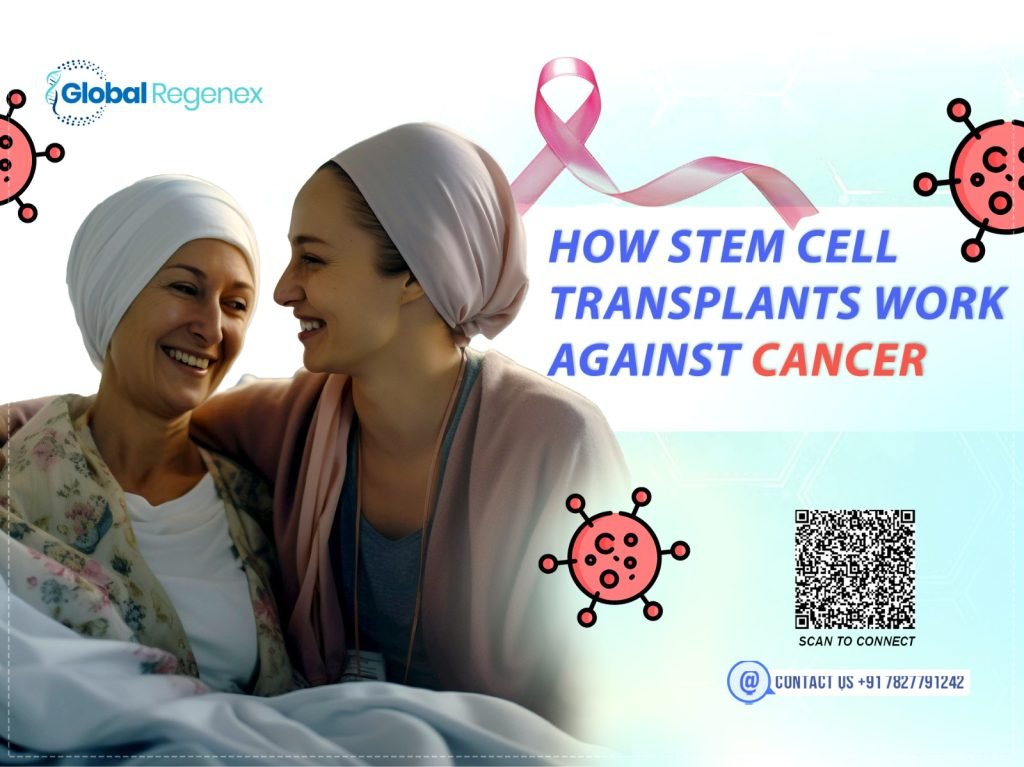
No one wants to take on cancer, and with modern medicine, we can only hope it makes more strides. stem cell transplants and they’re fighting cancer. If you or a loved one is fighting this disease, you’ve likely heard of stem cell therapy as a possible avenue of treatment. But how does that even work, exactly? And what is the reason for the limelight around stem cell therapy in India? Let’s simplify this and break it down. Before we continue, if you want to know what experts say about stem cell therapy or want to undertake the treatment, consult with Global Regenex for further information. What Are Stem Cells? Stem cells are repairmen of your body, they are the raw materials of body cells, which give rise to the other forms of cells. They possess the ability to become any form of damaged tissue or cells in order to heal the injured part. Stem cells can be converted into nerve cells, blood cells, and so on, with such flexibility makes them an asset in regenerative medicine. Types of Stem Cell Transplants Stem cell transplants exist in two common types: Autologous Transplant: In this kind, the patient’s own stem cells are harvested prior to chemotherapy or radiation and then returned to the body afterward. This approach lowers the risk of rejection because the cells originate from the patient. Allogeneic Transplant: In this method stem cells are taken from a donor, usually a sibling or a matched unrelated donor. Although this approach is associated with a greater risk for complications, it also creates the possibility that the donor’s immune cells will attack any leftover cancer cells. How Does Stem Cell Transplant Fight Cancer? Stem cell transplants are commonly used to restore the body’s ability to produce healthy blood cells following high-dose chemotherapy or radiation for cancer. Here’s how it works: Destroying Cancer Cells: Cancer cells are destroyed with high-dose chemotherapy or radiation. But the process also destroys healthy cells, especially in the bone marrow, where blood cells are made. Replacing Damaged Cells: Once the cancer cells have been eradicated, stem cells are then transplanted into the patient’s body. These stem cells may be harvested from the patient (autologous transplant) or from a donor (allogeneic transplant). Rebuilding the Immune System: The transplanted stem cells move to the bone marrow and begin making new, healthy blood cells. That is critical for recovery and helps rebuild the immune system. Killing Remaining Cancer Cells: Especially with allogeneic transplants, the immune cells of the donor then can recognize and attack any remaining cancer cells, adding another layer of defense. The Life-Changing Potential of Stem Cell Therapy Stem cell treatment gave new hope to cancer victims who did not improve with regular treatment. They not only assist in reconstructing the immune system but also can directly target and destroy cancer cells more efficiently. For Consultation If you are overwhelmed with the choices, you can contact Global Regenex for stem cell treatment or consultation. They have expertise in offering patients stem cell therapy as treatment worldwide, with having associations with numerous well-known hospitals. They can guide you through the process, answer your questions, and schedule an appropriate treatment plan for your needs. The Bottom Line Stem cell treatment is a ray of hope for numerous patients for cancer therapies as they can be overwhelming. If you are considering stem cell treatment in Delhi for yourself or your loved one, you need to conduct an inquiry with professionals such as Global Regenex to understand the optimal time & mode of treatment. Interested in learning more? Call us at Global Regenex for a complimentary professional consultation and personalized treatment plan.
How Are Stem Cells Produced In The Body?
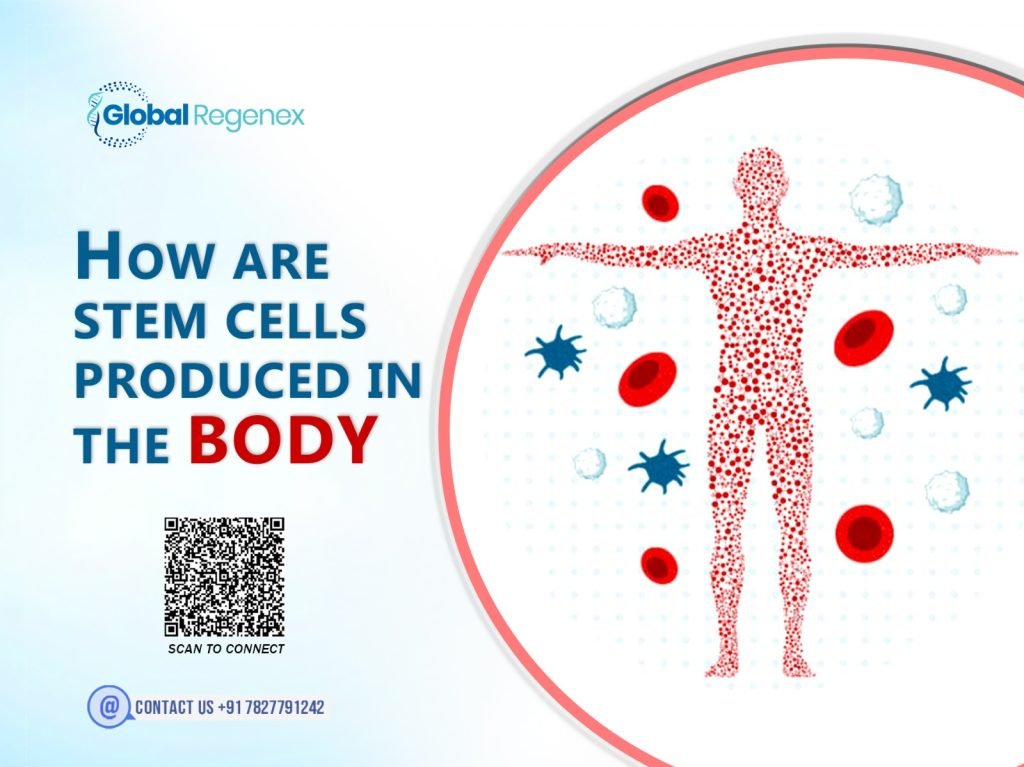
Stem cells, nowadays, have been creating waves in the regenerative medicine world, mostly with their power to treat a wide range of diseases. But do you know? How these powerful cells are produced in the body? Acknowledging the origin of this natural process can help you gain insight into the future of regenerative medicine, such as stem cell treatment in India. Additionally, if you are seeking stem cell treatment or just want to know more about regenerative medicin, consulting with Global Regenex would be a good idea. Understanding Stem Cells Before diving into the knowledge of production, let’s understand what stem cells are. They are the powerful body’s raw material cells, from which other cells are generated. These cells have two types of ability: Self-Renewal: These cells can divide into more stem cells. Differentiation: Stem cells can transform into many other types of cells in the body, like muscle cells, nerve cells, and more. The qualities mentioned above, make stem cell treatment in India a promising alternative treatment for many conditions. Where Do Stem Cells Come From? The human body produces stem cells naturally in various ways. Let us explore how various types of stem cells are obtained: Adult Stem Cells Adult stem cells are found within various tissues such as bone marrow, skin, and fat. They are multipotent in the sense that they differentiate into particular cell types but not into all of them. Bone Marrow Stem Cells: Produce blood cells such as red blood cells and platelets. Mesenchymal Stem Cells: found in tissues such as bone marrow, fat tissue, and umbilical cord tissue, and these make stem cell treatments for arthritis and spinal cord injury possible in Delhi. Induced Pluripotent Stem Cells Adult cells are now designed to basically have unlimited reproduction capacity, and now they can be watchmen for an embryonic cell-plus. How Are Stem Cells Naturally Produced in the Body? Stem cells possess a wonderful mechanism in the body that starts from their formation to survival. This is how it is: Stem Cell Niches In the body, stem cells are present in unique environments termed stem cell niches. These niches control stem cell activity, literally keeping them in a resting state until needed. Examples include: Bone marrow niches entice hematopoietic stem cells (blood-forming stem cells). Hair follicle niches support skin stem cells that are in charge of replacing hair and skin. The Process of Cell Division and Regeneration The body demands new cells. Therefore, stem cells divide, one daughter cell remaining a stem cell (in reserve) while the other becomes specialized. The cells, ranging from blood to skin to an interior lining of the digestive system, can continually regenerate themselves this way. Signals Role in Stem Cell Activation There is also the release of signals from the body, such as growth factors or hormones, which activate the stem cells to do their job whenever there is a need. Examples: Injury or Disease: If there is an injury, stem cells travel to the region of damage and repair it. Exercise and Diet: Research reveals that exercise on a regular basis and a well-balanced diet stimulate greater production of natural stem cells in the human body. The Future of Stem Cell Therapy with Global Regenex So advanced is regenerative medicine that the development of stem cell therapy in India has been quite rapid. Scientists are unfolding horizons for several diseases—characteristic of several orthopedic afflictions to neurologic diseases. Stem cell treatment is fast becoming popular due to the ease with which it can be accessed and improved outcomes. If you choose to undergo stem cell treatment in Delhi, then Global Regenex is a name that stands on solid grounds. Their specialists provide customized consultations, leading you to the finest solutions available regarding your situation. Putting All Together Whereas the body requires no introduction as the healing powerhouse, stem cells have a certain intrinsic significance in the process of repair and regeneration. Knowing how the cells are made, makes us value the great strides in the stem cell treatment in India. It holds significant potential, be it discovering stem cell treatments or simply appeasing oneself by curiosity about the various types of healing of the body. Curious to learn more? Post a query to Global Regenex for professional guidance in your path towards good health!
Facts About Stem Cell Therapy
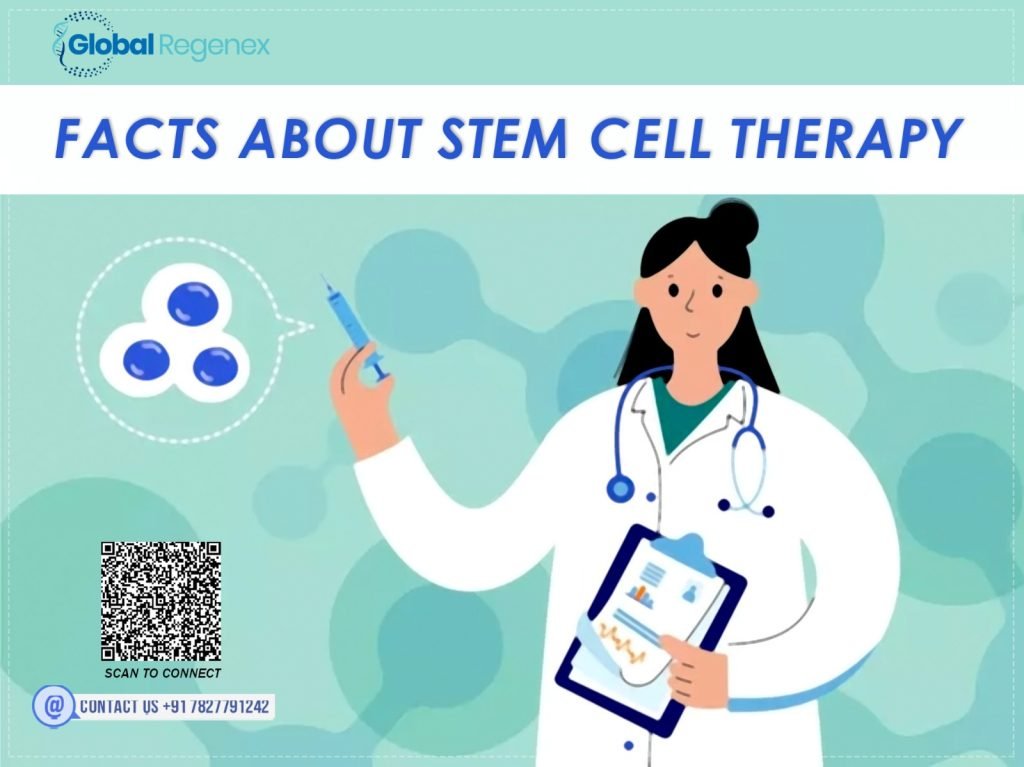
Have you wondered how modern regenerative medicine is pushing the boundaries of healing? Stem cell therapy is slowly becoming the epicenter and providing an alternative to surgery with less downtime. You might not know that there are some celebrities who, indeed, underwent stem cell therapy such as Cristiano Ronaldo, Max Scherzer, and more, to have pain-free treatment while avoiding the downtime that comes with surgery. While there is so much popularity of stem cell treatment in India also there are penalties of misinformation which leads to making wrong decisions, so it is important to consult with experts like Global Regenex, who has a team of experts specializing in regenerative medicine, to guide you in your journey to be healthy again. What Are Stem Cells? Stem cells are like repairmen of your body, they are the raw material of body cells, from which the other types of cells are derived. They have the power to transform into any type of damaged tissue or cells to heal the affected area. Stem cells can be transformed into nerve cells, blood cells, and more, with such versatility makes them valuable asset in regenerative medicine. What is Stem Cell Therapy? Stem cell therapy is basically a non-invasive and non-surgical process, which boosts the body’s natural healing process by injecting stem cells sourced from either the patient’s own bone marrow or through a donor. This is a safe and effective treatment that helps in: Repairing and regenerating damaged tissues. Eliminate inflammation and pain. Effectively heal the injuries and conditions. How Does Stem Cell Therapy Work? Stem cell therapy simply heals defective tissues and organs with their repairing or replacing by using these very efficient cells. The entire process generally involves: Extraction: Recovery of stem cells from some location like bone marrow, fat tissue, or the blood from the umbilical cord. Processing: Isolation and concentration of cells in a laboratory. Transplantation: Injections of stem cells that are processed into the patient’s system so they will stimulate healing and regeneration. This is why it is now utilized to treat many things, including orthopedic trauma debilitating and elusive diseases such as diabetes, or even neurological disorders. Conditions Treated Through Stem Cell Therapy Among several other applications, stem cell therapy is performed for: Orthopedic Issues Arthritis, painful joint, or sports injury. Neurological Illness Parkinson’s, Alzheimer’s, and spine disorders. Autoimmune Disorders like Multiple sclerosis, lupus, and rheumatoid arthritis. Oncological Disorders such as Diabetes, heart condition, and cirrhosis of the liver. It is vital that you arrange an audience with the experts. Global Regenex experts in personalizing the necessary stem cell solution for you according to your needs. How Long Does Stem Cell Therapy Last? The answer to this question depends on the person’s treatment plan and condition, in which treatment is being performed and how much damage has been done by the disease or injury. For some patient, stem cell therapy in Delhi acts as the last treatment they need to recover from the condition or injury and to get back to their active life. However, for some patients with slow healing power, it might take a few more rounds of stem cells to heal and live pain-free. Is Stem Cell Therapy Safe? The issue of safety in this area is valid and of great concern. Stem cell therapy is generally considered safe when conducted by qualified practitioners. Above all, ensure that you select a trustworthy clinic like Global Regenex, that has established its credentials. Always ask where the stem cells originate, what the success rates are for a specific treatment, and what potential dangers come along with it. The Future of Stem Cell Therapy The scope of stem cells is actually vast. Whether stopping aging or offering cures for diseases that have been untreatable in the past, scientists have focused on introducing new uses. With technology evolving, stem cell therapy should improve and become more accessible. Where to Consult with a Stem Cell Therapy Expert? If the thought of treating yourself with a stem cell therapy has crossed your mind then, Global Regenex is your partner in such endeavors. With experienced specialists reminding you under the care of the attending physician, personalized treatment plans are drawn in understanding to bring you the desired results. Be it for chronic pain, autoimmune conditions, or sports injuries, Global Regenex provides insight and expertise every step of the way. The Concluding Thoughts Stem cell therapy is revolutionizing, actually revolutionizing the concept of healing and recovery for every other aspect. As technology has progressed to repair injured tissues and cure numerous ailments, it is no surprise to observe how much interest stem cell therapy in India is gaining year after year. Today is the time for individuals in general to learn more about this revolutionary alternative treatment. To get started, contact Global Regenex and learn how stem cell therapy can be a true game-changer in your life and health. Welcome to the medical future, so tune in!
Can Stem Cells Repair Traumatic Brain Injury?
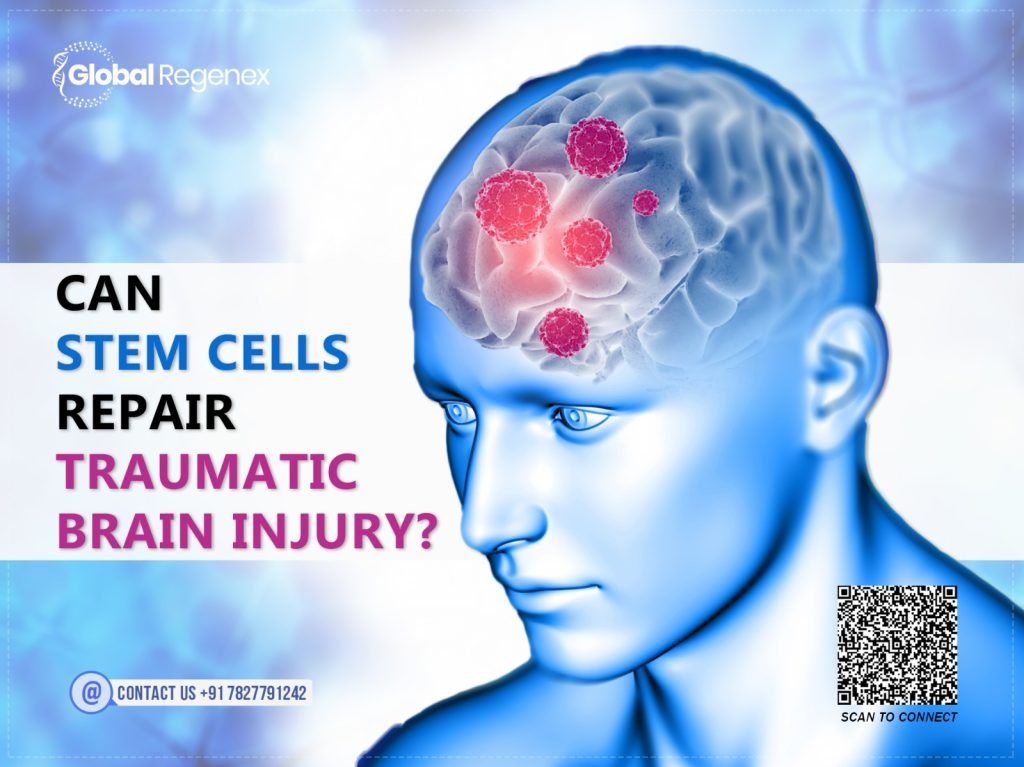
The most difficult medical condition, traumatic brain injury (TBI), is a condition afflicting millions of people around the globe. It can be due to an accident, sports injury, or stroke. It is defined by its long-term consequences, affecting the cognitive abilities, emotional stability, and physical capacities. Can stem cell therapy repair the brain, and restore its lost functions? Indeed, stem cells, which are the real game-changers in modern medicine. Traditionally, TBI treatment focused only on symptom management, with no serious effort having been made to repair the damaged brain. This is where the advent of the stem cell therapy in India has come to save hopes for patients that want recovery. We will review stem cell therapy in this blog and also analyze the revolutionized care of TBI, and why it could be the future for brain injury treatment. How Do Stem Cells Help Repair Brain Injury? Regeneration and healing of damaged tissues are the unique characteristics of stem cells. stem cells function in a multitude of ways in the brain injury: Regeneration of Tissue: In the form of newborn neurons, stem cells replace cellular material that was lost when brain cells died or were destroyed. Inflammatory Reduction: The effects of chronic inflammation have a tendency to worsen the symptoms of TBI. Stem cell treatment reduces inflammation and provides a more favorable environment for healing. Repairing Blood Vessels: Traumatic brain injury hampers the blood supply to the brain. Stem cells aid in building damaged blood vessels, aiding in the transport of oxygen and nutrients through them. Enhancing Neuroplasticity: With an amazing capacity for self-reorganization, the brain restructures itself; gradual augmentations stem cells facilitate this function for further improvement in cognitive motor functions. How Does Stem Cell Therapy Repair Traumatic Brain Injury? In stem cell therapy, stem cells, which are the source and scope, are usually harvested from either the patient or donor and are injected into a specific area to allow for healing. Here is a look into a typical procedure: Harvesting Stem Cells: These cells are usually extracted from the bone marrow, adipose tissue, or umbilical cord. Processing & Culturing: These cells are processed to be the most effective for regeneration. Administration: Stem cells are given through IV infusions or direct to the brain through injections. Monitoring and Rehabilitation: After therapy, rehabilitation is undertaken by patients to achieve optimal recovery benefits. The Future of Traumatic Brain Injury Treatment with Stem Cells With continued research, stem cell therapy should be capable of providing more and more lucid insights to applications in complicated diseases such as TBI. To this end, researchers are engineering other improvements, including genetic manipulation and combination treatments, to enhance the very healing capabilities of stem cells. Hence, in case stem cell therapy achieves peak progress in the years to come, it shall no longer remain an alternative, but the hallmark of future treatment of traumatic brain injury. Need Consultation? If you or your loved one have scheduled to go through stem cell therapy in Delhi, it becomes very crucial for you to choose a reliable provider capable of offering these treatments. India’s best state-of-the-art consultants for treating stem cells is Global Regenex, which is a very renowned consultancy for regenerative medicine. It employs the most modern methodologies and evidence-based protocols to provide the patients with the maximum possible opportunity for a favorable outcome from TBI. The Concluding Thoughts Stem cells are unlocking new avenues for traumatic brain injury sufferers, promising genuine prospects of rehabilitation above and beyond existing therapies. With top facilities such as Global Regenex providing improved stem cell therapy in Delhi, India is gaining prominence as a regenerative medicine center. If you or a family member is battling TBI, speaking with these specialists may be the key to a brighter future. The brain possesses a remarkable power of healing, and through the intervention of stem cell therapy in India, healing might not be an imaginary dream, but a reality.
Stem Cell Transplants in Cancer Treatment

The word “breakthrough” is used a lot when it comes to treating cancer. But few are as promising as stem cell transplants. These small, potent cells are revolutionizing the approach to treating cancer, providing promise when standard approaches can fail. So, if you are looking for stem cell therapy in India, you’ve landed at the right place. Let’s go through how stem cells change the face of cancer treatment and why they might just be the breakthrough you have been looking for. and if this is enough for you to undertake stem cell therapy, you should directly consult with Global Regenex for further information. What Are Stem Cells, and How Do They Work? Stem cells are raw resources for various rare and difficult developmental possibilities. Theoretically, all other cells with specialized tasks are created from these few common ancestors. Their unique capability to distribute into other types of cells makes them a hot property in regenerative medicine. Stem cells are also used in the treatment of cancer to replenish the immune system after high-dose radiation or chemotherapy, which eliminates, along with cancer cells, normal bone marrow too. How Does Stem Cell Transplant Help in Cancer Treatment? The non-invasive treatments like bone marrow transplants or stem cell transplants are most commonly used for the treatment of blood cancers such as leukemia, lymphoma, and myeloma. The reason and why it is so are discussed below: Replacing Damaged Bone Marrow The bone marrow may be destroyed due to high-dose treatment. Stem cell transplants replace the damaged bone marrow with healthy bone marrow so that the body will again be able to produce blood cells. Increasing the Immune System Stem cells can restore a healthier immune system, and that is crucial in cancer and recurrence battle. Targeting Hard-to-Treat Cancers In hard-to-treat cancers that are resistant to standard treatments, stem cell therapy presents a new ray of hope and an alternative option. Who Can Benefit from Stem Cell Transplants? Stem cell transplants aren’t for everyone, but they can be life-changing for patients with: It can treat blood cancers like leukemia, lymphoma, and myeloma. Certain genetic disorders affect blood cells. Stem cell treatment can also treat autoimmune diseases that haven’t responded to other treatments. If you’re unsure whether stem cell therapy is right for you, a consultation with experts at Global Regenex can help clarify your options. What to Expect During Stem Cell Treatment? The process typically includes: Preparing: Chemotherapy or radiation kills cancer cells and makes room for new stem cells. Transplant: Healthy stem cells are infused into the bloodstream. Recovery: Close monitoring and supportive care to let the body rebuild and recover. The process may be challenging, but that the payoff potential—the ability to have a better quality of life, reduced risk of relapse, and even remission—makes it worth consideration. Want to Learn More? For stem cell therapy in Dehli, there is no place better than Global Regenex. With decades of experience and access to the best qualified professionals, Global Regenex walks patients through the entire treatment process — from consultations to after care. The process is simplified and hassle-free by their professionals. Summarization Stem cell transplants are the newest frontier in cancer care, a lifeline and a cure for patients whose treatment options have been exhausted. Stem cell treatment in India is growing more accessible and affordable in the present time, which is the best time to learn about this innovative approach to therapy. The fight against cancer is a hard one, but breakthroughs like stem cell therapy are more promising than ever. Don’t delay — reach out to Global Regenex today and discover how stem cells can be your ticket to a better tomorrow!
Who Is a Good Candidate for Stem Cell Therapy?
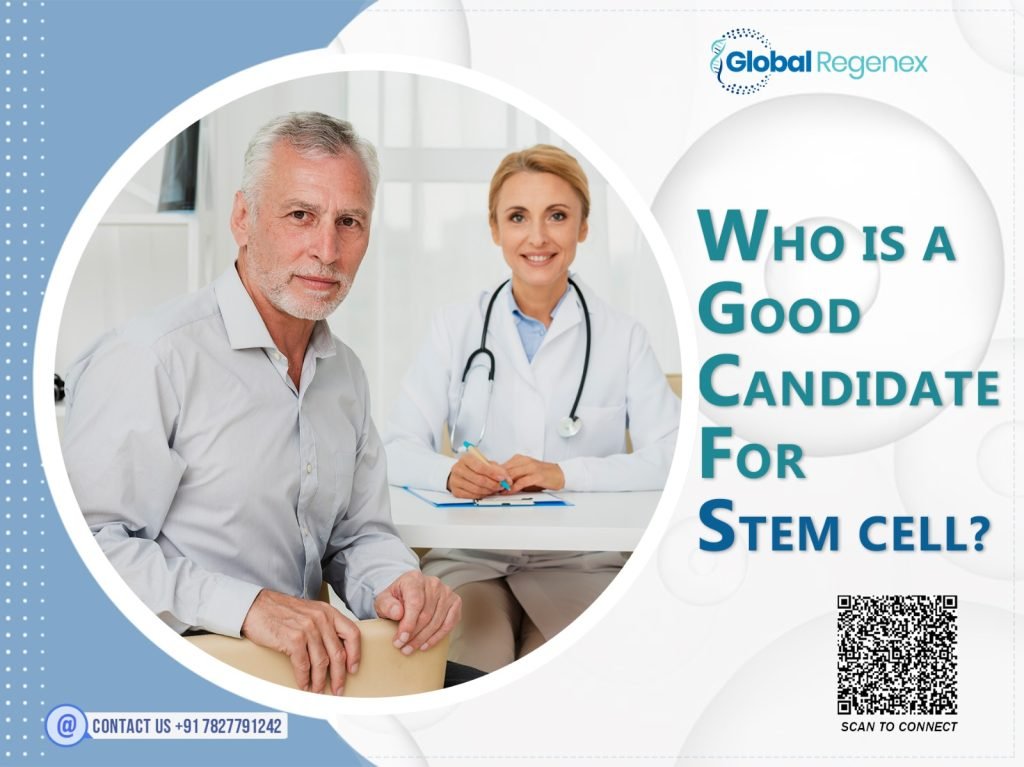
Have you ever wondered if stem cells are the solution to getting back health and life? It has attracted global interest as a novel advanced therapy due to its underlying mechanism as a restoration of injured cells, inflammation attenuation, and regenerative induction. It, for one, envisions a shiny future whereby stem cells help lead the way to cures for chronic disease and relief from joint pain — all alternatives to modern medicine. To get information on stem cell therapy in India contact Global Regenex. Overview of Stem Cell Therapy In order to repair damaged tissues, lower inflammation, and restore functionality, stem cell treatment makes use of the body’s natural regenerative ability. It appears that this nearly supernatural treatment works well for conditions including arthritis, spinal cord injuries, neurological illnesses, etc. Specifically, stem cell therapy is seen to be a viable non-invasive, and efficient treatment option. Types of Stem Cells Based on their capacity to differentiate into many cell types, stem cells are divided into various varieties: Adult Stem Cells: Adult stem cells, which are found in fat and bone marrow, aid in the repair of damaged tissue but are not very capable of differentiating. Induced Pluripotent Stem Cells: Induced pluripotent stem cells, sometimes referred to as reprogrammed adult cells, function similarly to embryonic stem cells and provide a different approach for study and treatment. Mesenchymal Stem Cells: Mesenchymal stem cells are found in bone marrow and fat and are used extensively in regenerative medicine to treat immunological and orthopedic conditions. Good Candidate for Stem Cell Therapy This innovative treatment can help a lot of people, but stem cell therapy is not a one-size-fits-all solution. A strong applicant possesses the following attributes: Joint and Musculoskeletal Issues: Patients with osteoarthritis or degraded cartilage often see notable changes in their health after receiving stem cell therapy. This technique promotes tissue regeneration, enhances joint function, and lessens edema. Nerve-Related Problems: Research indicates that stem cell therapy may be beneficial for a variety of conditions, including multiple sclerosis. Stem cells help repair damaged nerves and slow the progression of many diseases. Autoimmune Conditions: For conditions like lupus and rheumatoid arthritis, stem cell therapy has promise. It functions through immune system regulation and healing promotion. Chronic Health Conditions: Stem cell therapy has the potential to revitalize the body and enhance general health in patients with chronic conditions such as diabetes, liver cirrhosis, and others. Alternative for Surgery: Stem cell therapy is preferred over surgery by many because it is less intrusive, permits a faster recovery, and carries a lower risk of problems than procedures like knee replacements or spinal fusions. Future of Stem Cell Therapy Recent scientific developments are advancing stem cell therapy in regenerative medicine. Researchers are looking into how stem cells might be used to treat a variety of illnesses, including some forms of cancer and spinal cord injuries. This research holds promise for both creating novel medicines and enhancing the efficacy of existing ones. For Consultation Seeking advice from a reliable medical professional is essential when thinking about stem cell therapy. Renowned stem cell therapy in Delhi consultant Global Regenex offers professional advice and individualized treatment programs. They guarantee the greatest results for individuals looking for regenerative treatments with their dedication to patient-centric care and state-of-the-art research. Summarization For those dealing with a variety of medical conditions, stem cell therapy offers hope as a significant advancement in medical science. Nervous system abnormalities, persistent pain, and degenerative diseases may all be treated with this rapidly developing medication. Individuals facing these obstacles can set out on a journey that could greatly improve their general health and well-being by choosing a qualified specialist, like Global Regenex.
What Is The Success Rate Of Stem Cell Therapy In India?
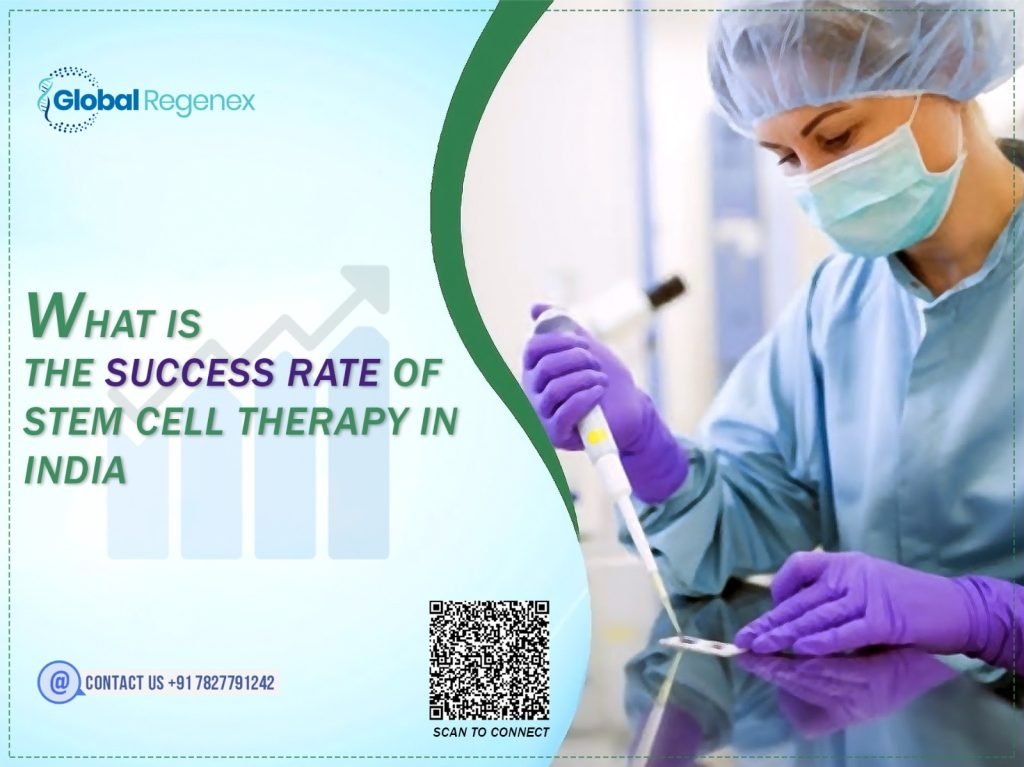
With increased research in the area of regenerative medicine, stem cell therapy is emerging quickly as a revolutionary cure for the majority of degenerative and chronic illnesses. Still, the question arises does it work, and should the patients choose to receive this sort of treatment? It is true factor that India has emerged as the world hub for the treatment using stem cells in advancing medical technology. A new therapy is used in patients with neurological defects, orthopedic ailments, and autoimmune diseases. However, what does it say about the success rate? Let’s look at the success rates of stem cell treatment in India. Overview of Stem Cell Therapy Stem cells are incorporated into the body for the purpose of replacement, regeneration, and repair of damaged bodily tissues. One of the remarkable features that has made it successful in treating conditions like diabetes, autoimmune diseases, neurological disorders, and orthopedic issues is the ability to differentiate into a wide variety of cell types. Types of Stem Cells Stem cells are differentiated according to their origin and ability to differentiate. The major categories of stem cells that are applied in therapy are listed below. Adult Stem Cells (ASCs): These cells are present in tissues like fat and bone marrow and are responsible for the repair and regeneration of tissues. Induced Pluripotent Stem Cells: These are adult cells, genetically reprogrammed to have characteristics similar to those of embryonic stem cells. Mesenchymal Stem Cells (MSCs): Because of their anti-inflammatory and regenerative abilities, MSCs, obtained from bone marrow, umbilical cord, and adipose tissue, are some of the most frequently used cells in regenerative treatments. Success Rate of Stem Cell Therapy in India India is now becoming a hub for the treatment of stem cell therapy. The easy and highly cost-effective advanced medical infrastructure in this country brings patients from around the world. Studies say good results here, especially for blood diseases, joint regeneration, and for neurological problems. India’s making great strides in this direction! Brain Disorders: Recovery rate from 50% to 80%, showing remarkable results in cerebral palsy, Parkinson’s disease, and spinal cord injuries. Orthopedic Conditions: Success rate between 60% to 85% in the case of ligament injuries, osteoarthritis, and cartilage regeneration; pain relief and improvement in mobility in many patients. Autoimmune Disorders: Excellent results for such patients with autoimmune disorders as lupus and multiple sclerosis have gone from 55% to 75% and above, as reported, having a significant positive effect on such conditions. Management of Diabetes: Results so far include an improvement in both insulin sensitivity and function of the pancreatic the overall success rate in current studies and case reports has ranged from 40% to 70%. For Expert Advice If you’re thinking of opting for stem cell therapy in Delhi for yourself or for a loved one, talking to an expert before the treatment is a good idea. Global Regenex is your reliable consultant that will connect you to advanced medical facilities. They will guide you expertly, formulate personalized treatment plans, and assist you throughout the process. The Concluding Thoughts Stem cell treatment has been producing fantastic results in India for a majority of medical conditions. Recent progress, sound moral behavior, and reasonable charges have made it a favorite destination for patients looking for regenerative treatments. If you are now considering your options for stem cell treatment, Global Regenex can help you move forward with confidence and experience.
